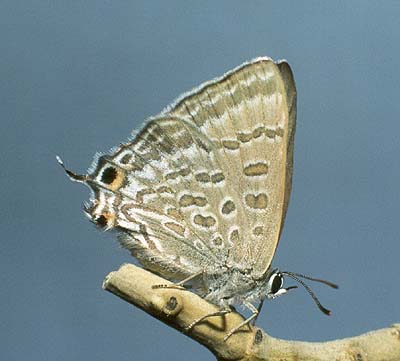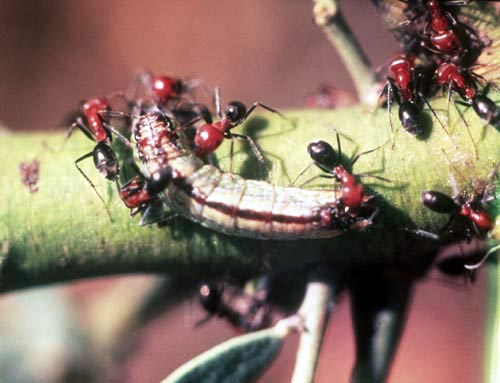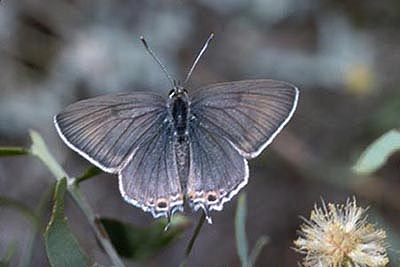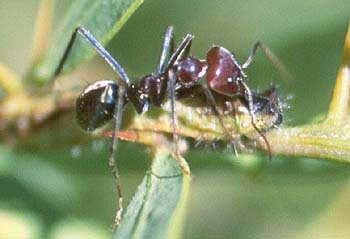Lithochroa Hairstreak
Jalmenus lithochroa (Waterhouse)

Interesting Aspects
This is the only butterfly believed to be totally endemic to South Australia. The butterflies occur in small colonies, which seem to be transitory and most of the older monitored colonies no longer exist. The butterfly belongs to the endemic Australian Theclinae, which have a very strong association with ants.
Historically the butterfly has been recorded as two mega-populations. One in the Adelaide Plains Region and the other in the Mid North - Flinders Ranges - Olary Regions. There may have been a continuous population but the intervening plains area was thoroughly cleared for agricultural purposes very early during European settlement in the years succeeding 1836. The southern mega-population is now presumed extinct with the last living adult recorded about 1959. Remaining colonies in the northern mega-population are totally dependent on Acacia victoriae as a larval hostplant and on the large ferocious meat ant as a larval attendant ant. Both the ant and the hostplant are reasonably common which would make one believe that the butterfly should also be more widespread and stable. However, the low number of active colonies would suggest that some other control is either keeping the butterflies at a low population level or is causing a slow decline, which is not perceptively obvious.
The butterflies usually remain very near to the colony. The males are the most active as they fly about the hostplant looking for newly emerged females.






